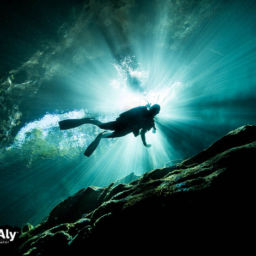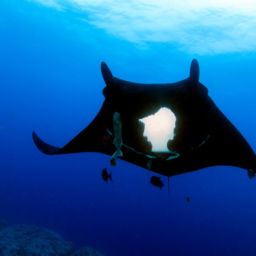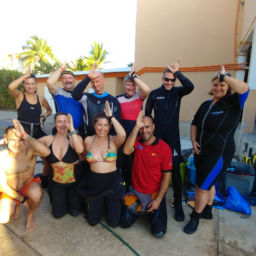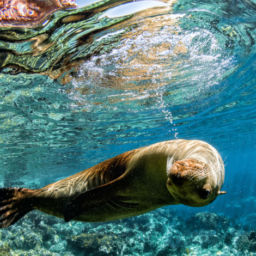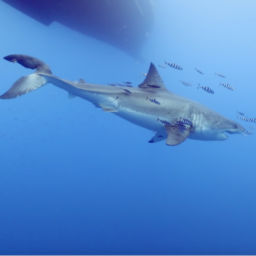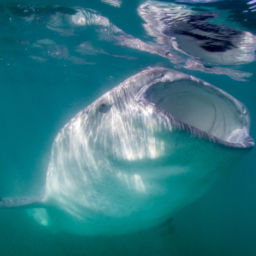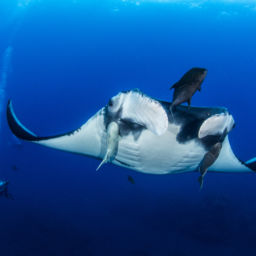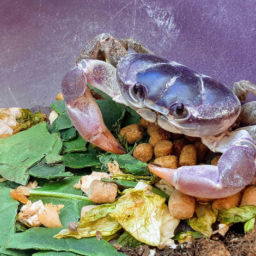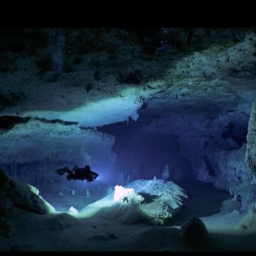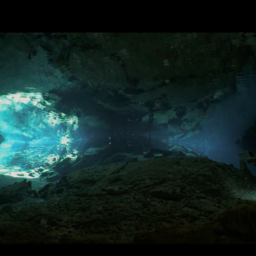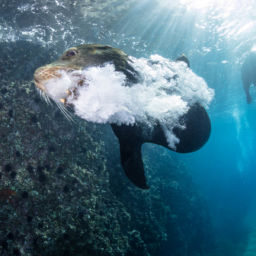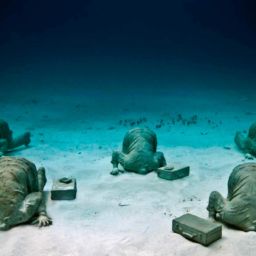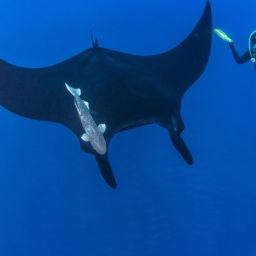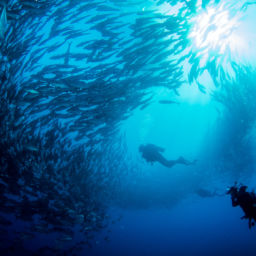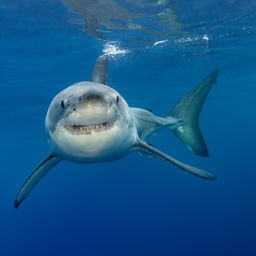Mexico offers a huge variety of dive experiences to satisfy everyone from beginners to technical divers. Beside the incredible geographic diversity and varied marine life, divers can experience wreck diving, cave diving in the cenotes and even visit an underwater art museum. Here are our picks for some of the best scuba diving in Mexico.
El Museo Subaquàtico de Arte (MUSA)
MUSA is an underwater contemporary art museum just offshore from Cancun. The museum has over 500 life-size sculptures, created by English/Guyanese artist Jason deCaires Taylor and several others, which divers can swim amongst. There are three different “galleries,” ranging from 10 to 20 feet (3 to 6 m) deep, so you’ll get plenty of bottom time and snorkeling is a possibility as well.
Whale sharks in Isla Mujeres
If you time your trip right, you can not only visit MUSA, but also snorkel with whale sharks in Isla Mujeres, which lies right off the coast of Cancun. Located where the Gulf of Mexico joins the Caribbean, Isla Mujeres is the best location in Mexico to potentially see hundreds of whale sharks. Peak season here is between June and September.
Manta rays at Socorro Island
Part of the Revillagigedo Islands, Socorro Island lies about 242 miles (390 km) offshore from Cabo San Lucas, making it a perfect place to spot large numbers of pelagic species. Among these are schools of hammerhead sharks, manta rays and humpback whales. Divers can see mantas throughout the year, with peak season running between November and May. The humpback whales migrate past between January and March. During this time visibility can be lower, especially around the full moon, but that is also what attracts the mantas – and maybe even a whale shark if you are lucky. Currents around Socorro Island can get very strong so divers should be advanced and experienced.
Sea lions in the Sea of Cortez
These lovable animals populate many of the dive sites all around the Sea of Cortez with Isla San Pedro and Los Islotes being special favorites. You can see more than 400 sea lions around San Pedro, but no matter where you snorkel or dive, you’re nearly guaranteed encounters with playful pups. Mind the large bull seals, who don’t want you to get to close to their harem — if they swim near and blow bubbles in your direction, take it as a warning and back off a bit.
Great white sharks in Guadalupe
Guadalupe Island, 218 miles (352 km) off the coast of Ensenada, is one of the world’s top spots to see great whites, with multiple sharks nearly guaranteed each day in clear, blue waters. The beauty of cage-diving here is that you needn’t be particularly experienced to do so. Certified divers can enter cages that drop down to around 24 feet (7 m), and which offer excellent views of the gigantic sharks swimming nearby. Those without certification can participate as well in surface cages, which are often closer to the action as “shark wranglers” throw bait, tied to a long hemp rope, off the back of the boat to attract the sharks. The best time to see the sharks is between August and October.
Bull sharks in Playa Del Carmen
Each year, female bull sharks migrate to Playa del Carmen (on the Caribbean side of the Yucatan Peninsula) to breed. The best time to see them is between November and March, although they could still be found in the area as late as May.
Cenote diving in the Yucatan
Cenote diving is nearly synonymous with diving in Mexico. The Yucatan jungle flooded during the last ice age, nearly 6,500 years ago. The rain, combined with sulfuric minerals in the earth created this underwater cavern system, carved out of porous limestone bedrock. The system spans over 124 miles (200 kms) and offers divers unique sites with natural light beams penetrating the clear water. Fresh water floats on top with saltwater underneath, creating the opportunity to witness distinctive haloclines. The best time to dive the cenotes is between May and September.
Wreck diving in Veracruz, Cozumel and Puerto Morelos
There are an estimated 4,000 wrecks in the Gulf of Mexico. Veracruz is slightly more ‘off the beaten path’ and offers five dive-able wrecks. Cozumel is home to the Felipe Xicotencatl, which was scuttled for divers in 1999. Early in the year, divers can see spotted eagle rays around the former minesweeper C-56 Juan Escutia in Puerto Morelos.








